Side effects of leukemia. Understanding Leukemia Side Effects: Symptoms, Causes, and Management Strategies
What are the common side effects of leukemia treatment. How does chemotherapy impact blood cell counts. Can leukemia therapy lead to infections. What is tumor lysis syndrome in leukemia patients. How does graft versus host disease affect stem cell transplant recipients. Are there ways to manage nausea and fatigue during leukemia treatment. Does leukemia therapy affect fertility.
The Impact of Leukemia and Its Treatment on Blood Cell Counts
Leukemia, particularly acute myeloid leukemia (AML), significantly affects the production of normal blood cells. The disease itself, as well as the chemotherapy used to treat it, can lead to severe deficiencies in various blood cell types. These deficiencies can result in several health complications:
- Anemia (low red blood cell count)
- Thrombocytopenia (low platelet count)
- Neutropenia and monocytopenia (low white blood cell counts)
During treatment, patients often require blood transfusions to maintain adequate levels of red blood cells and platelets. This supportive care is typically necessary for several weeks until the body’s blood cell production normalizes.

How does leukemia therapy affect blood cell production?
Chemotherapy, while effective against leukemia cells, also impacts healthy blood cells. This dual effect results in a temporary but significant decrease in all blood cell types. The body’s ability to produce new blood cells is compromised during treatment, leading to the need for transfusions and increased risk of complications such as infections and bleeding.
Infection Risks and Prevention Strategies in Leukemia Patients
The combination of low white blood cell counts and damage to the body’s natural barriers (such as mouth and intestinal linings) significantly increases the risk of infection in leukemia patients. To combat this risk, healthcare providers employ several strategies:
- Prophylactic antibiotics to prevent infections
- Prompt antibiotic treatment at the first sign of infection
- In some cases, use of growth factors to stimulate white blood cell production
- Patient and caregiver education on infection prevention techniques
What precautions should leukemia patients take to avoid infections?
Leukemia patients and their caregivers should adhere to strict hygiene practices, including frequent handwashing and careful cleaning of central lines or ports. It’s crucial to seek immediate medical attention if any signs of infection appear, such as fever, chills, coughing, sore throat, pain during urination, or diarrhea.

Graft Versus Host Disease: A Potential Complication of Stem Cell Transplantation
Allogeneic stem cell transplantation, a treatment option for some leukemia patients, carries the risk of graft versus host disease (GVHD). This condition occurs when the donor’s immune cells attack the patient’s healthy cells, mistaking them for foreign invaders.
Who is at highest risk for developing GVHD?
The risk of GVHD increases with the patient’s age. Older recipients of stem cell transplants are more likely to experience this complication, which can range from mild to severe and potentially life-threatening. Healthcare providers closely monitor transplant recipients for signs of GVHD and implement appropriate treatments to manage its effects.
Tumor Lysis Syndrome: A Metabolic Emergency in Leukemia Treatment
Tumor lysis syndrome (TLS) is a serious metabolic complication that can occur during the early phases of leukemia treatment, especially in patients with high white blood cell counts before starting induction therapy. This condition results from the rapid destruction of cancer cells, leading to the release of their cellular contents into the bloodstream.
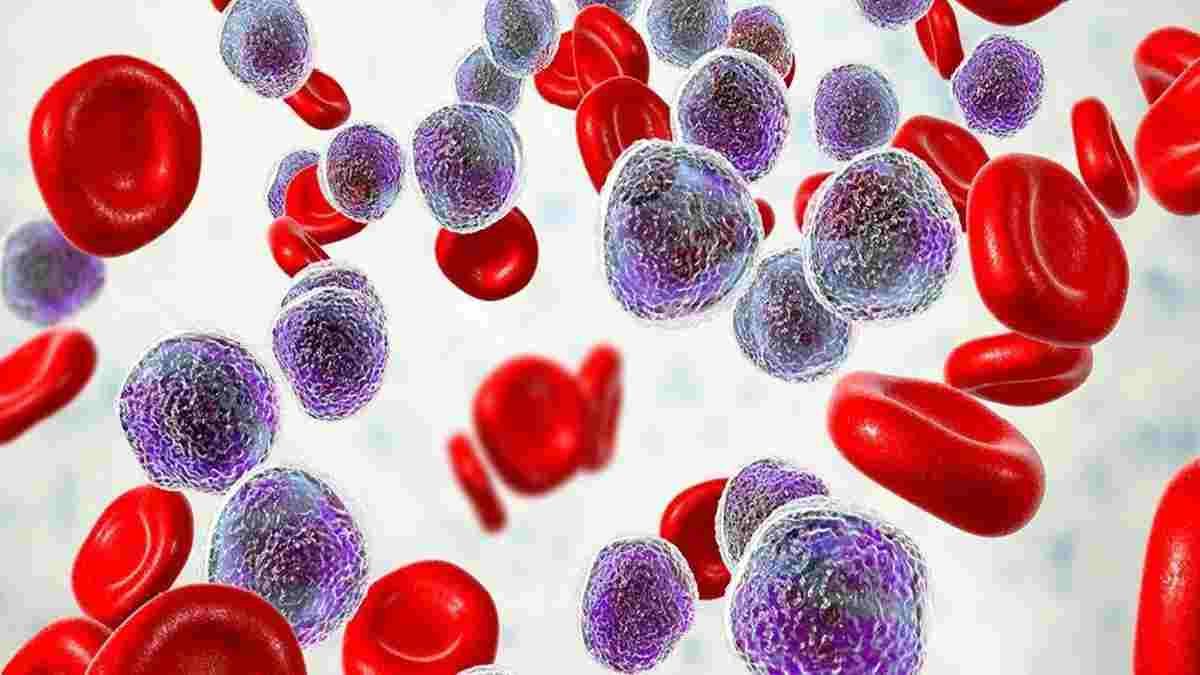
How does tumor lysis syndrome affect the body?
The sudden influx of cellular components can overwhelm the kidneys and disrupt the body’s chemical balance. High levels of uric acid and other substances can damage the kidneys and heart, potentially leading to severe complications such as:
- Heart arrhythmias
- Seizures
- Loss of muscle control
- Acute kidney failure
To prevent or manage TLS, doctors may prescribe medications such as allopurinol or rasburicase, which help regulate uric acid levels and protect organ function during treatment.
Differentiation Syndrome: A Unique Challenge in Certain Leukemia Treatments
Differentiation syndrome is a potentially life-threatening complication associated with specific leukemia treatments, including all-trans retinoic acid (ATRA), enasidenib, and ivosidenib. This condition requires prompt recognition and treatment to prevent serious outcomes.
What are the symptoms of differentiation syndrome?
Patients experiencing differentiation syndrome may develop:

- Fever
- Swelling in the limbs
- Difficulty breathing
- Low blood pressure
- Fluid accumulation around the heart or lungs
Treatment typically involves steroid therapy or the administration of chemotherapy drugs to reduce white blood cell counts. In severe cases, the differentiating agents may need to be temporarily discontinued.
Managing Common Side Effects of Leukemia Treatment
Leukemia treatment can lead to a variety of side effects that impact a patient’s quality of life. While some side effects are unavoidable, many can be effectively managed with proper care and medication.
What are the most common side effects of leukemia therapy?
Patients undergoing leukemia treatment frequently experience:
- Mouth ulcers
- Diarrhea
- Hair loss
- Skin rashes
- Nausea and vomiting
- Fatigue
- Loss of appetite
- Neuropathy (nerve damage)
Healthcare providers work closely with patients to develop personalized strategies for managing these side effects, which may include medications, dietary adjustments, and supportive therapies.

Fertility Concerns and Preservation Options for Leukemia Patients
The impact of leukemia treatment on fertility is a significant concern for many patients, especially those of reproductive age. Chemotherapy and radiation therapy can potentially affect reproductive organs and hormone production, leading to temporary or permanent infertility.
Are there ways to preserve fertility before leukemia treatment?
Fertility preservation options are available for many leukemia patients, but they must be considered before beginning treatment. These options may include:
- Sperm banking for men
- Egg or embryo freezing for women
- Ovarian tissue cryopreservation
- Use of hormonal therapies to protect ovaries during treatment
It’s crucial for patients to discuss fertility concerns with their healthcare team early in the treatment planning process to explore all available options.
Long-Term Health Monitoring for Leukemia Survivors
As leukemia treatments continue to improve, more patients are surviving and facing long-term health considerations. Regular follow-up care is essential for monitoring potential late effects of treatment and maintaining overall health.

What long-term health issues should leukemia survivors be aware of?
Leukemia survivors may be at increased risk for:
- Secondary cancers
- Cardiovascular disease
- Endocrine disorders
- Cognitive changes
- Bone density issues
Healthcare providers develop personalized long-term follow-up plans for leukemia survivors, which may include regular screenings, lifestyle recommendations, and ongoing support to address both physical and emotional well-being.
Emerging Therapies and Their Impact on Side Effect Profiles
As research in leukemia treatment advances, new therapies are being developed that aim to improve efficacy while minimizing side effects. These emerging treatments include targeted therapies, immunotherapies, and novel combinations of existing drugs.
How do newer leukemia treatments differ in terms of side effects?
Compared to traditional chemotherapy, many newer treatments offer more targeted approaches that may result in fewer systemic side effects. For example:
- Tyrosine kinase inhibitors often cause less severe myelosuppression
- CAR T-cell therapy can lead to more specific immune-related side effects
- Monoclonal antibodies may have lower rates of hair loss and nausea
While these newer therapies can offer improved side effect profiles for some patients, they may also introduce new and unique adverse effects that require careful monitoring and management.
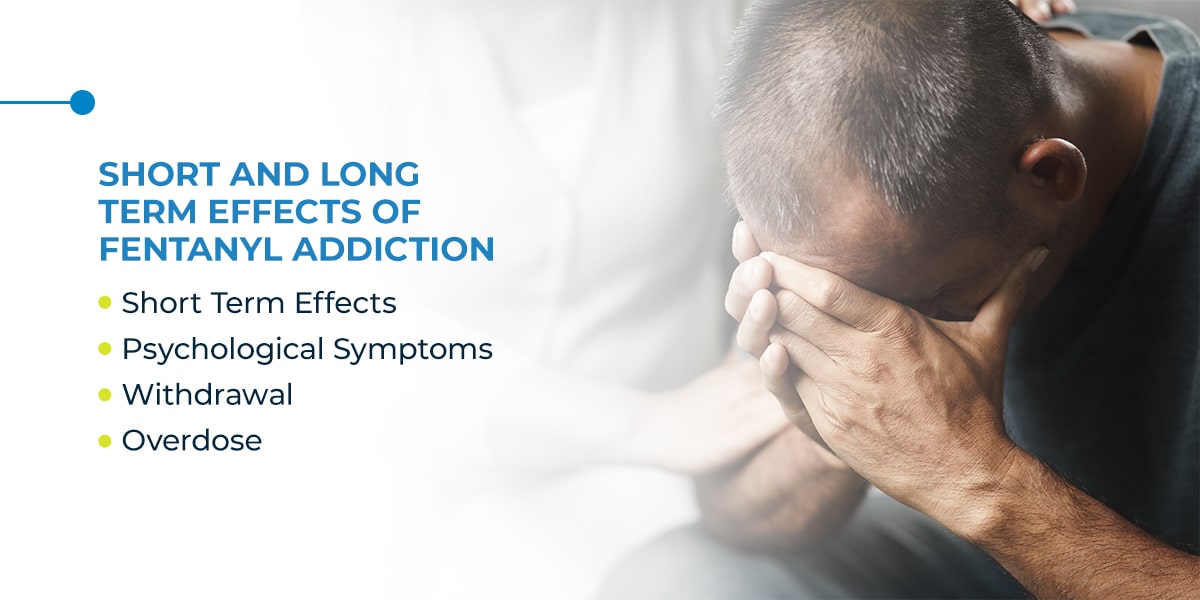
The Role of Supportive Care in Managing Leukemia Side Effects
Comprehensive supportive care is crucial in helping leukemia patients cope with treatment side effects and maintain their quality of life. This multidisciplinary approach involves various healthcare professionals working together to address the physical, emotional, and practical needs of patients.
What types of supportive care are available for leukemia patients?
Supportive care for leukemia patients may include:
- Pain management
- Nutritional support
- Physical therapy
- Psychological counseling
- Palliative care services
- Social work support
By integrating these supportive services into the overall treatment plan, healthcare teams can help patients better tolerate therapy, manage side effects, and maintain a higher quality of life throughout their leukemia journey.
Patient Education and Empowerment in Side Effect Management
Empowering leukemia patients with knowledge about potential side effects and management strategies is essential for improving treatment outcomes and quality of life. Well-informed patients are better equipped to recognize and report side effects early, leading to more prompt and effective interventions.

How can patients actively participate in managing their treatment side effects?
Patients can take an active role in side effect management by:
- Keeping a detailed symptom diary
- Communicating openly with their healthcare team
- Learning about their medications and potential interactions
- Following prescribed self-care routines
- Participating in support groups or patient education programs
Healthcare providers should encourage patients to ask questions, voice concerns, and actively engage in their care decisions to foster a collaborative approach to side effect management.
The Impact of Leukemia Side Effects on Quality of Life
While leukemia treatments have significantly improved survival rates, the side effects of both the disease and its therapies can have a profound impact on patients’ quality of life. Understanding and addressing these impacts is crucial for comprehensive patient care.
How do leukemia side effects affect daily life and well-being?
The side effects of leukemia and its treatment can influence various aspects of a patient’s life, including:

- Physical functioning and energy levels
- Emotional and mental health
- Social relationships and activities
- Work or school performance
- Financial well-being due to treatment costs and potential loss of income
Healthcare providers and support teams work with patients to develop strategies for maintaining quality of life throughout treatment and into survivorship, addressing both the physical and psychosocial impacts of leukemia.
Balancing Treatment Efficacy and Side Effect Management
One of the greatest challenges in leukemia care is striking the right balance between aggressive treatment to combat the disease and managing the associated side effects. This delicate balance requires ongoing communication between patients and their healthcare team to make informed decisions about treatment intensity and supportive care measures.
How do doctors determine the appropriate treatment intensity for individual patients?
Factors that influence treatment decisions and intensity include:
- The specific type and stage of leukemia
- The patient’s overall health and age
- Genetic and molecular characteristics of the leukemia cells
- The patient’s ability to tolerate side effects
- The availability of targeted therapies or clinical trials
By carefully weighing these factors and engaging in shared decision-making with patients, healthcare providers can develop treatment plans that offer the best chance of success while minimizing the burden of side effects.
:max_bytes(150000):strip_icc()/lisinopril-causes-cough-1124151_Final_V2-755cb0776b65439e8d3d8cb65e35f027.gif)
https://www.lls.org/leukemia/acute-myeloid-leukemia/treatment/side-effects
Both cancer therapy and acute myeloid leukemia (AML) can sometimes produce side effects. For most patients, side effects are temporary and subside once the body adjusts to therapy or when therapy is completed. For other patients, side effects can be more severe, sometimes requiring hospitalization. The side effects of chemotherapy may vary, depending on the drugs used and the overall health of the patient.
Before you undergo treatment, talk with your doctor about potential side effects. Drugs and other therapies can prevent or manage many side effects.
Side Effects and Complications
Low blood cell counts. AML decreases the production of normal blood cells. In addition, chemotherapy is toxic to both normal blood cells and AML cells. The normal blood cells are eliminated from the marrow along with AML cells. For the patient, this results in a severe deficiency in
- Red cells (anemia)
- Platelets (thrombocytopenia)
- White cells called “neutrophils” and “monocytes” (neutropenia and monocytopenia)
Patients may need red blood cell and platelet transfusions for a period of several weeks during treatment. After that, blood cell counts usually return to normal.
After that, blood cell counts usually return to normal.
Infection. During treatment for AML, the deficiency of neutrophils and monocytes (types of white cells) can lead to infection. The risk of infection may be increased because chemotherapy damages the lining of the mouth and intestines, making it easier for bacteria to enter the blood. When the white cell count is low and infection risk is increased, antibiotics are given to prevent or treat infection. White blood cell transfusions are generally not used for AML patients, so doctors sometimes use growth factors to help increase a patient’s white blood cell count. However, growth factors are used only in special circumstances, and routine use of these agents is not recommended.
Patients and families should practice frequent and vigorous handwashing and take other precautions to avoid exposure to bacteria, viruses and other infection-causing agents. Caregivers of patients who have central lines or ports need to carefully clean the sites, as instructed by the medical team.
Seek medical attention immediately if you show any signs of infections such as
- A temperature of 100.4°F or higher
- Chills
- Coughing
- Sore throat
- Pain during urination
- Diarrhea
Patients with AML Patients with AML are advised to receive certain vaccinations.
Graft versus host disease. If you undergo an allogeneic stem cell transplantation, you’re at high risk of developing graft versus host disease (GVHD). The older you are, the higher your risk for GVHD. GVHD develops when the donor’s immune cells mistakenly attack the patient’s normal cells. GVHD can be mild, moderate or severe – even life threatening.
Tumor Lysis Syndrome. This condition occurs when a large number of cancer cells die within a short period of time, releasing their contents into the blood. TLS can be severe during the early phases of treatment, especially for patients who have very high white blood cell counts before they start induction therapy. As the leukemia cells die, they break apart and release their contents into the bloodstream, which changes the normal balance of chemicals in the blood. This can overwhelm the kidneys because they cannot get rid of the substances all at once. Uric acid is one of the chemicals released by the dying cancer cells. Very high levels of uric acid and other chemicals can cause severe damage to the kidneys and heart. If untreated, TLS can lead to heart arrhythmias, seizures, loss of muscle control, acute kidney failure and even death.Patients with leukemia who are at high risk for or have developed laboratory or clinical evidence of TLS are given drugs, such as allopurinol (Zyloprim®) or rasburicase (Elitek®), which prevent or lessen TLS.
As the leukemia cells die, they break apart and release their contents into the bloodstream, which changes the normal balance of chemicals in the blood. This can overwhelm the kidneys because they cannot get rid of the substances all at once. Uric acid is one of the chemicals released by the dying cancer cells. Very high levels of uric acid and other chemicals can cause severe damage to the kidneys and heart. If untreated, TLS can lead to heart arrhythmias, seizures, loss of muscle control, acute kidney failure and even death.Patients with leukemia who are at high risk for or have developed laboratory or clinical evidence of TLS are given drugs, such as allopurinol (Zyloprim®) or rasburicase (Elitek®), which prevent or lessen TLS.
Differentiation Syndrome. This is a potentially life-threatening complication of treatment with differentiating agents, such as all-trans retinoic acid (ATRA), enasidenib (Idhifa®) and ivosidenib (Tibsovo®). Symptoms include fever, swelling in the limbs and trouble breathing. Patients may also experience a drop in blood pressure and have fluid build-up around the lungs or heart. Treatment must begin at the first signs or symptoms. Treatment consists of steroid therapy or the administration of the antimetabolite drug hydroxyurea and other chemotherapy drugs to decrease the number of white blood cells, which are the source of differentiation effects. In severe cases, use of differentiating agents is stopped.
Symptoms include fever, swelling in the limbs and trouble breathing. Patients may also experience a drop in blood pressure and have fluid build-up around the lungs or heart. Treatment must begin at the first signs or symptoms. Treatment consists of steroid therapy or the administration of the antimetabolite drug hydroxyurea and other chemotherapy drugs to decrease the number of white blood cells, which are the source of differentiation effects. In severe cases, use of differentiating agents is stopped.
Other Side Effects. The following side effects are also common. Click here to read more about these side effects.
- Mouth ulcers
- Diarrhea
- Hair loss
- Rashes
- Nausea and vomiting
- Fatigue
- Loss of appetite
- Neuropathy
Fertility
Chemotherapy may also affect fertility (the ability to have a child in the future). Patients concerned about this potential side effect should talk with a fertility specialist before beginning treatment. Click here to learn more about fertility.
Click here to learn more about fertility.
Long-Term and Late Effects of Treatment
Treatment for individuals who have AML sometimes causes effects that continue after treatment ends (long-term effects) or develop much later in life (late effects). Various factors can influence the risk of developing long-term or late effects, including
- Type and duration of treatment
- Age at the time of treatment
- Gender and overall health.
Most AML patients are treated with an anthracycline, like daunorubicin. Anthracyclines have been associated with increased risk for heart muscle injury or chronic heart failure. Heart disease may not become apparent until many years after therapy ends.
Stem cell transplantation is used to treat some patients with AML. It has been associated with long-term or late effects, including infertility, thyroid dysfunction, chronic fatigue and risk for developing a second cancer (lymphoma; melanoma of the skin; or cancer of the tongue and salivary glands, central nervous system, bone, soft tissue and thyroid gland). The number of patients who develop secondary cancers is small. These and other possible long-term and late effects can be managed.
The number of patients who develop secondary cancers is small. These and other possible long-term and late effects can be managed.
Related Links
- Managing Side Effects
- Integrative Medicine and Complementary and Alternative Therapies
- Download lists of questions to ask your doctor
- Download or order The Leukemia & Lymphoma Society’s free publications
- Acute Myeloid Leukemia in Adults
- Side-Effect Management series
- Fertility Facts
https://www.lls.org/leukemia/acute-lymphoblastic-leukemia/treatment/side-effects
Therapy for acute lymphoblastic leukemia (ALL) can produce side effects. For most patients, treatment side effects are temporary and go away once therapy ends. For other patients, side effects can be severe, sometimes requiring hospitalization.
Before you start treatment, talk with your doctor about potential side effects. Drugs and other therapies can prevent or manage many side effects. Many treatment side effects go away or become less noticeable over time.
Drugs and other therapies can prevent or manage many side effects. Many treatment side effects go away or become less noticeable over time.
Common Side Effects
The side effects you may experience depend on:
- The intensity of chemotherapy
- The drugs used during therapy
- Overall health and whether you have any chronic health conditions like diabetes or kidney disease
Side effects common to ALL and its treatment, especially chemotherapy and stem cell transplantation, include:
- Low blood cell counts. ALL can cause a decrease in normal blood cell production. Chemotherapy is toxic to both normal blood cells and ALL cells, making the number of healthy cells decrease.
- Infection. The infection risk increases during chemotherapy when the body doesn’t produce enough white cells to keep the immune system working properly.
- Pain. Patients may experience bone pain due to leukemia cells in the bone marrow. Some chemotherapy medications may cause peripheral neuropathy, a nerve problem that can cause pain, numbness and tingling in the hands and feet.

- Graft versus host disease. Patients who undergo an allogeneic stem cell transplantation are at risk of developing graft versus host disease (GVHD). GVHD develops when the donor’s immune cells mistakenly attack the patient’s normal cells. GVHD can be mild, moderate or severe – even life threatening.
- Tumor Lysis Syndrome (TLS). TLS is characterized by metabolic abnormalities caused by the sudden release of the cellular contents of dying cells into the bloodstream, which is induced by chemotherapy. If untreated, TLS can lead to heart arrhythmias, seizures, loss of muscle control, acute kidney failure and even death. Patients with leukemia are constantly monitored for the development of TLS and are given drugs, such as allopurinol (Zyloprim®) or rasburicase (Elitek®), to prevent or lessen the effects of this condition.
- In patients who have received corticosteroids such as prednisone and dexamethasone as part of their treatment:
- Hyperglycemia and steroid-induced diabetes.
 Patients should be monitored for glucose control.
Patients should be monitored for glucose control. - Stomach ulcers. Use of proton-pump inhibitor drugs to reduce stomach acid is recommended during steroid therapy to reduce these risks.
- Hyperglycemia and steroid-induced diabetes.
The following side effects are also common. Click here to read more about these side effects.
- Mouth sores
- Diarrhea
- Hair loss
- Rashes
- Nausea and vomiting
- Headaches
- Loss of appetite
- Fatigue
- Neuropathy-numbness, tingling or muscle weakness (usually in the hands or feet)
Long-Term and Late Effects of Treatment
For some patients, side effects may last or appear well after they finish treatment To read more about lingering side effects, see The Leukemia & Lymphoma Society’s free publication, Long-Term and Late Effects of Treatment in Adults.
For information about the drugs listed on this page, visit Drug Listings.
Related Links
- Download or order The Leukemia & Lymphoma Society’s free booklet,
- Acute Lymphoblastic Leukemia (ALL) in Adults
- Side-Effect Management series
- Managing Side Effects
- Integrative Medicine and Complementary and Alternative Therapies
- Download lists of questions to ask your doctor
Leukemia ▷ therapy, chances of recovery and specialists
What is leukemia (leukemia)?
Leukemia is colloquially referred to as blood cancer. This is a malignant change in the cells of the blood and lymph system. The main changes occur with the cells in the bone marrow, which divide many times and can reach all areas of the body with the blood. A distinction is made between acute and chronic forms, with acute symptoms occurring early and chronic symptoms later.
This is a malignant change in the cells of the blood and lymph system. The main changes occur with the cells in the bone marrow, which divide many times and can reach all areas of the body with the blood. A distinction is made between acute and chronic forms, with acute symptoms occurring early and chronic symptoms later.
In addition, there is a division according to the type of malignant cells: blood or lymph cells. Thus, four groups of leukemia arise: acute myeloid leukemia (AML), acute lymphoblastic leukemia (ALL), chronic myeloid leukemia (CML), and chronic lymphocytic leukemia (CLL). However, leukemias are rare compared to other cancers. Some species are usually found in childhood (CLL), others also in older age.
Causes and symptoms of leukemia
The reasons are often unknown.
However, in many cases they involve high levels of radiation (such as radiation therapy)
,
carcinogens (eg, benzene), viruses, and certain gene modifications.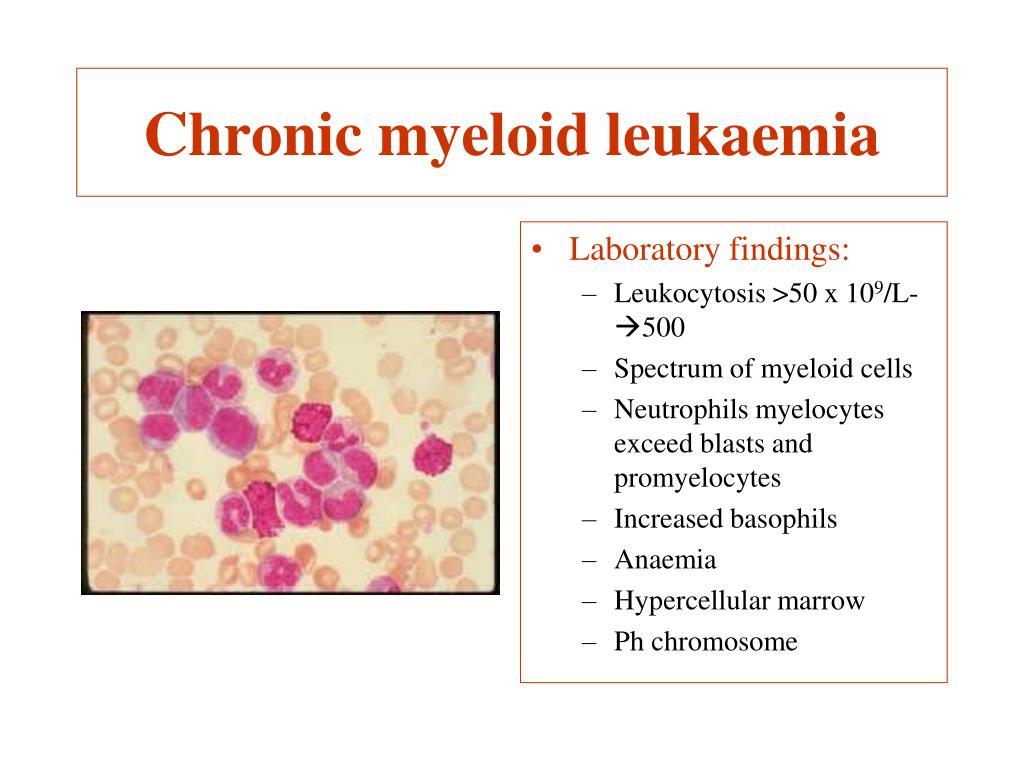 Because the normal growth of blood cells is suppressed by an increase in the mass of cancer cells, symptoms such as fatigue, disruption, bleeding, increased susceptibility to infection, as well as fever, night sweats, and weight loss occur.
Because the normal growth of blood cells is suppressed by an increase in the mass of cancer cells, symptoms such as fatigue, disruption, bleeding, increased susceptibility to infection, as well as fever, night sweats, and weight loss occur.
Left untreated (especially acute forms) can lead to death within a few months. Therefore, early treatment of leukemia by a hematologist (a specialist in hematology and cancer) is essential.
Leukemia treatment
The goal of leukemia treatment is to kill all cancer cells and therefore eliminate the dangerous symptoms. Recovery is possible only with treatment. For this, in acute forms, it is necessary to start therapy immediately. Forms of chronic leukemia, especially in CLL, can wait because the disease progresses very slowly and the therapy is associated with significant side effects.
How is leukemia treated?
Chemotherapy
is a necessary basis for any type of treatment for leukemia. Usually it is polychemotherapy. Here, the hemato-oncologist prescribes several growth-inhibiting (cytostatic) drugs that support each other’s action. They attack leukemic cells at various points in order to completely destroy malignant tumors.
Usually it is polychemotherapy. Here, the hemato-oncologist prescribes several growth-inhibiting (cytostatic) drugs that support each other’s action. They attack leukemic cells at various points in order to completely destroy malignant tumors.
Depending on the type of leukemia, additional radiation therapy, stem cell transplantation, or special targeted drugs should follow. Acute leukemia requires immediate treatment. Various treatment procedures follow in which strong chemotherapeutic agents enter the body through the venous system. Therefore, the first stages of treatment (the phase of induction and consolidation) are carried out in a hospital, and the maintenance treatment necessary for ALL is carried out on an outpatient basis. The duration of therapy for AML is about 1 year, and for ALL it is about 2.5 years.
In the treatment of chronic leukemia, less aggressive chemotherapy drugs are used. Often, outpatient treatment with pills is sufficient here. This allows you to suppress leukemic cells and relieve symptoms for many years.
Targeted therapy is used in CML (tyrosine kinase inhibitors inhibit important processes in leukemia cells), but chemotherapy and interferon therapy are also used. However, a complete cure is not possible. It can only be achieved with a bone marrow transplant from a healthy donor.
CLL spreads very slowly, allowing you to wait and monitor your blood counts. Only with complaints or poor blood counts, treatment is required. It uses special antibodies in combination with chemotherapy. Such treatment can be carried out on an outpatient basis for many years. Full recovery from CLL occurs only in the most rare cases.
Chances of recovery and life expectancy with leukemia
Different forms of leukemia respond differently to treatment. This leads to different prognosis depending on the type of disease, age and health of the affected person.
For example, ALL can be completely cured in children in more than 80% of cases, but in CLL the chances of recovery are low, although survival and quality of life can be improved with many years of therapy.
The duration of leukemia in many cases is several months, if not years. A huge dose of radiation and chemotherapy can cause recurrence of leukemia or other forms of cancer, in addition to acute side effects such as hair loss or gastrointestinal disturbances. Therefore, it is extremely important to have follow-up with a hemato-oncologist to recognize and treat recurrence (relapse) of leukemia as early as possible. Since in many cases there are good prospects for treatment.
Which doctors and clinics are specialists in the field of leukemia?
Anyone who needs a doctor wants the best medical care. The patient asks himself where to find the best clinic. Since this question cannot be answered objectively, and an authoritative doctor will never claim that he is the best, you can only rely on his experience.
We will help you find a specialist to treat your condition. All listed doctors and clinics have been reviewed by us for their excellence in the treatment of leukemia and await your question or treatment request.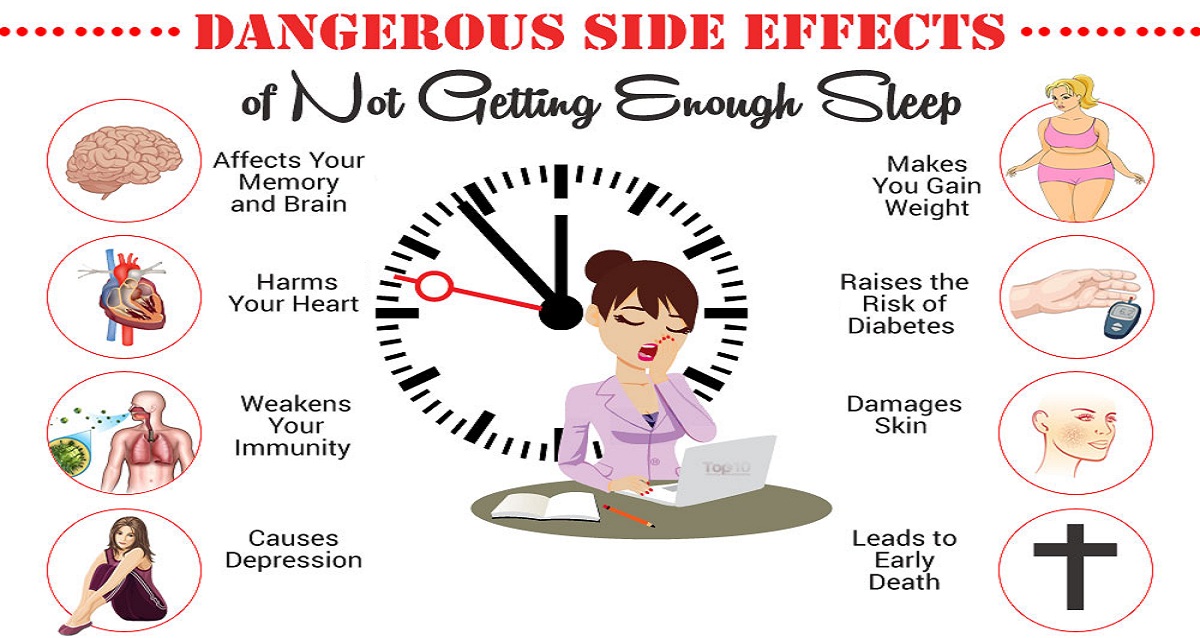
Sources
:
- Herold, Gerd: Internal Medicine. Cologne, self-published 2012.
- Arasteh, C. Benkler, H.-W.; Bieber, S. et al.: Internal Medicine. Stuttgart, Georg Thieme Verlag KG 2009.
Leukemia (leukemia) – types, causes, symptoms, methods of treatment
| Primary appointment (examination, consultation) with an oncologist | 6 500 ₽ |
| Repeated appointment (examination, consultation) with an oncologist | 5,500 ₽ |
| Appointment (examination, consultation) with an oncologist, Ph.D. 9 | 7 500 ₽ |
| Appointment (examination, consultation) of an oncologist, specialist of the Institute of Oncology (consultation with preparation of a treatment plan), primary | 7 500 ₽ |
| Appointment (examination, consultation) of an oncologist, specialist of the Institute of Oncology (consultation with preparation of a treatment plan), repeated | 6 500 ₽ |
| Appointment (examination, consultation) of an oncologist, professor of the Institute of Oncology (consultation with drawing up a treatment plan), primary | 11,000 ₽ |
| Appointment (examination, consultation) of an oncologist, professor of the Institute of Oncology (consultation with drawing up a treatment plan), repeated | 10,000 ₽ |
| Appointment (examination, consultation) of an oncologist, chief specialist in oncology, primary | 9,000 ₽ |
| ) oncologist, chief specialist in oncology, repeated | 7 500 ₽ |
| Primary remote consultation of an oncologist | 6 500 ₽ | |||||||||||||||||||||||||||||||||||||||||||||||||||||||||||||||||||||||||||||||||||||
| Remote consultation of an oncologist repeated | 5 500 ₽ | |||||||||||||||||||||||||||||||||||||||||||||||||||||||||||||||||||||||||||||||||||||
Remote consultation of an oncologist, PhD, primary . m.s., repeated m.s., repeated | 7 500 ₽ | |||||||||||||||||||||||||||||||||||||||||||||||||||||||||||||||||||||||||||||||||||||
| Remote consultation of an oncologist, chief specialist in oncology, primary | 9 000 ₽ | |||||||||||||||||||||||||||||||||||||||||||||||||||||||||||||||||||||||||||||||||||||
| Remote consultation oncologist, chief specialist in oncology, repeated | 7 500 ₽ | |||||||||||||||||||||||||||||||||||||||||||||||||||||||||||||||||||||||||||||||||||||
| Remote consultation of an oncologist, specialist of the Institute of Oncology (consultation with preparation of a treatment plan), primary | 7,500 ₽ | |||||||||||||||||||||||||||||||||||||||||||||||||||||||||||||||||||||||||||||||||||||
| Remote consultation of an oncologist, specialist of the Institute of Oncology (consultation with preparation of a treatment plan), repeated | ||||||||||||||||||||||||||||||||||||||||||||||||||||||||||||||||||||||||||||||||||||||
| Remote consultation of an oncologist, professor of the Institute of Oncology (consultation with preparation of a treatment plan), primary | 11 000 ₽ | |||||||||||||||||||||||||||||||||||||||||||||||||||||||||||||||||||||||||||||||||||||
Remote consultation with an oncologist, professor of the Institute of Oncology (consultation with preparation of a treatment plan), repeated
|


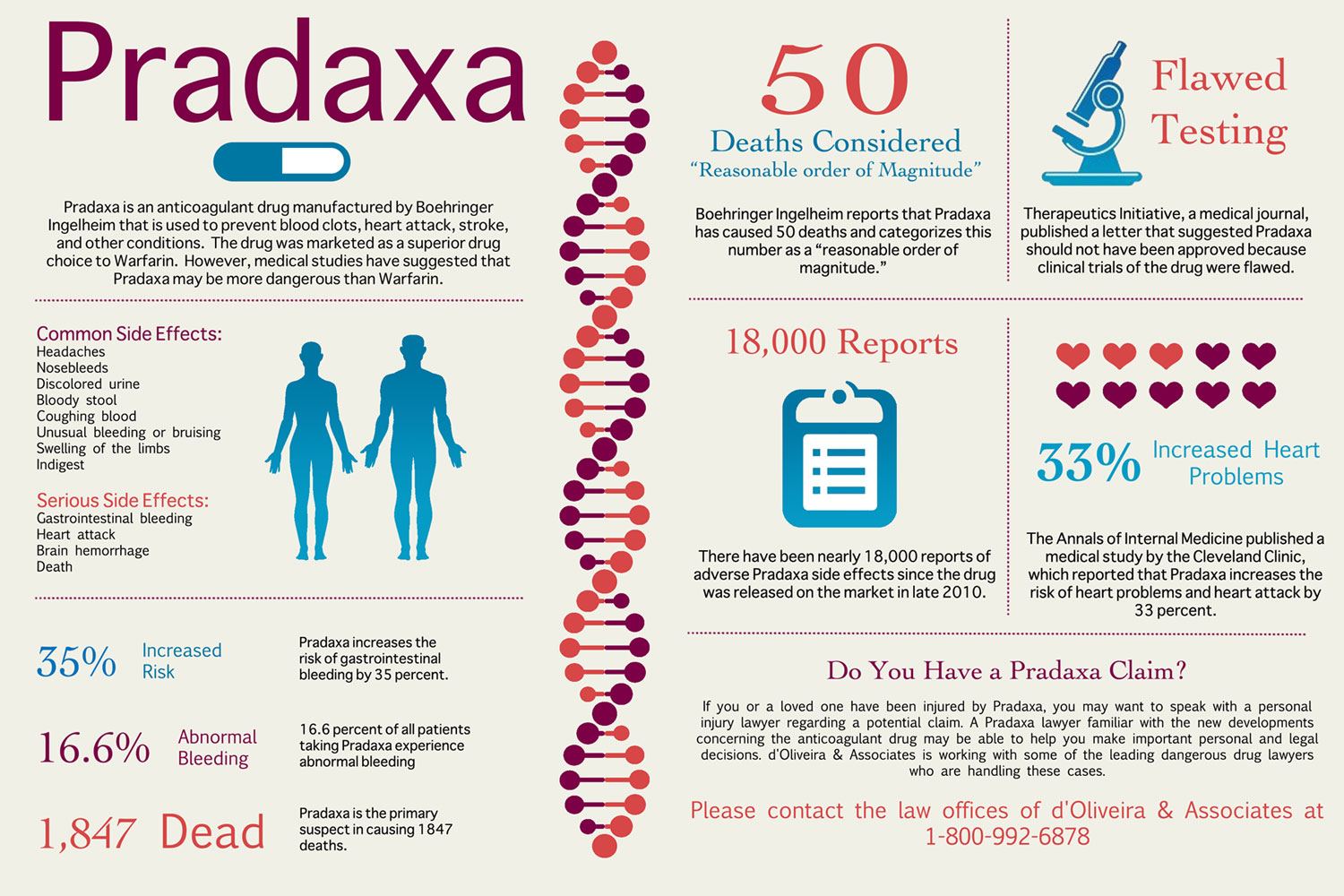 Patients should be monitored for glucose control.
Patients should be monitored for glucose control.
